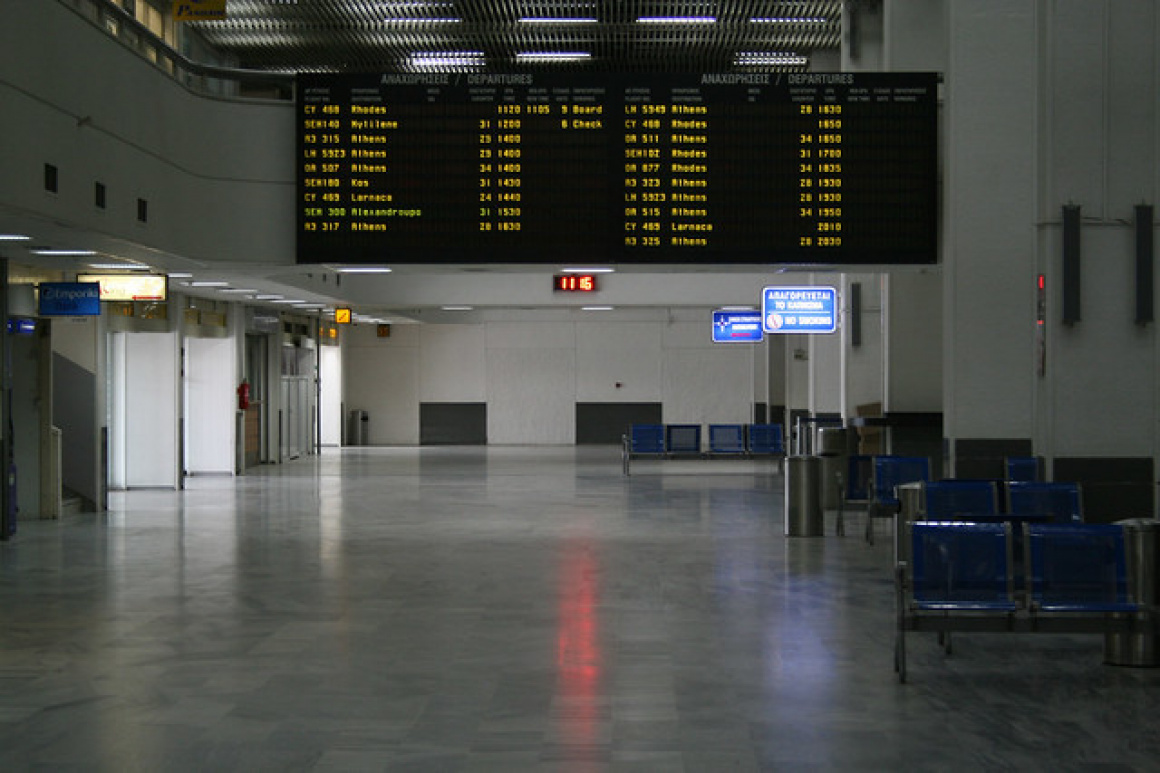When travelling to Crete, one of the first practical matters you’ll encounter is getting from the airport to your destination. Crete has multiple airports and a variety of transportation options – from public buses and taxis to private shuttles and car hires. This guide will help you navigate Crete’s airports and transfer options, including tips on which airport to fly into, how to get to major cities and resort areas from the airport, and what to expect along the way.
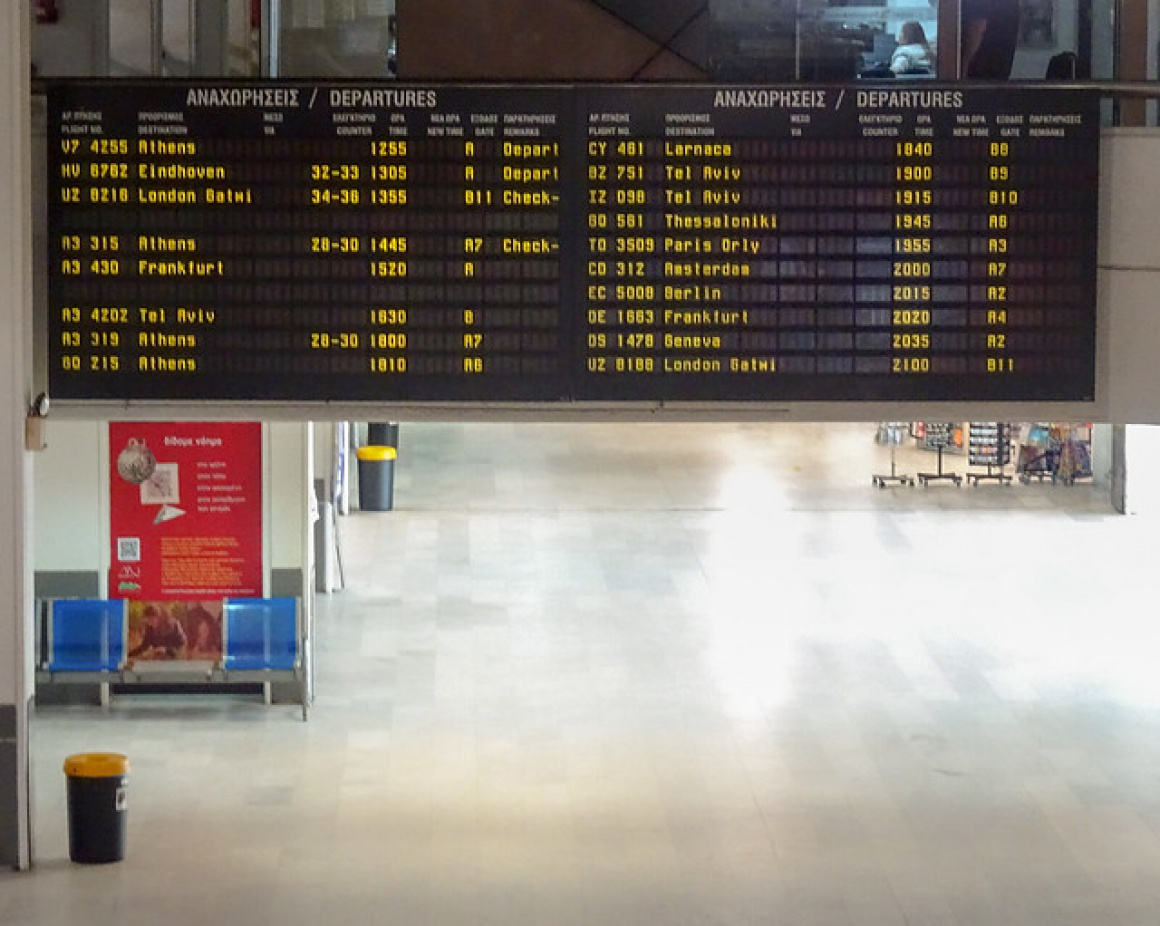
 'Heraklion Departures' - Attribution: mikecogh
'Heraklion Departures' - Attribution: mikecoghCrete’s Airports Overview
Crete has three airports that serve civilian passengers:
• Heraklion International Airport (HER) – Also called “Nikos Kazantzakis Airport”. This is Crete’s main and busiest airport, near the capital Heraklion on the north‐central coast. Most flights from Europe and Athens land here. It can be very crowded in summer.• Chania International Airport (CHQ) – Named “Ioannis Daskalogiannis Airport”. The second‐busiest, on the Akrotiri peninsula near Chania (northwest Crete). Many international charters and some budget flights use Chania, especially from Europe (Scandinavia, UK, Germany, etc.). Domestic flights from Athens also operate from here.• Sitia Public Airport (JSH) – A much smaller airport in the far east of Crete. It has limited flights (mostly domestic or from a few neighbouring islands/cities). Travellers rarely use it unless they have a reason to be in the Sitia region or are connecting from another island.
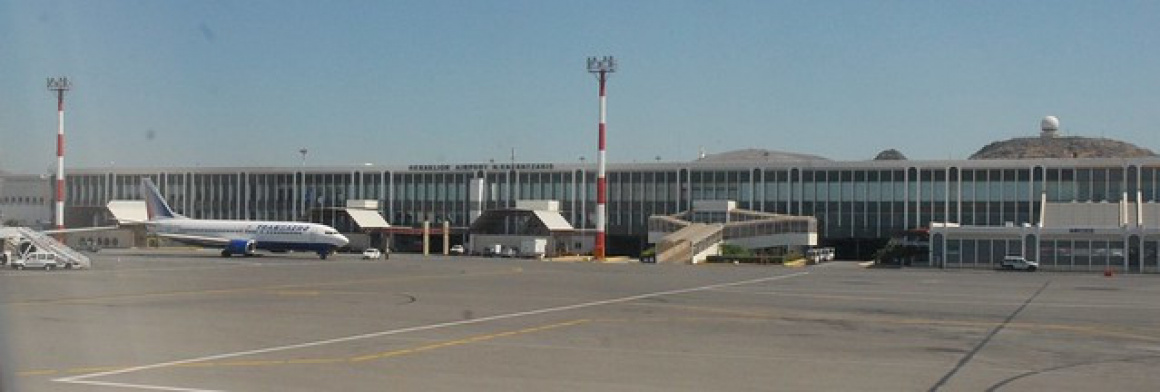
 'Iráklio airport Nikos Kazantzakis' - Attribution: Luigi Rosa
'Iráklio airport Nikos Kazantzakis' - Attribution: Luigi RosaMost likely, you’ll be flying into either Heraklion or Chania depending on your itinerary and flight availability. Let’s briefly mention Sitia but focus on the first two since they handle the vast majority of travellers.
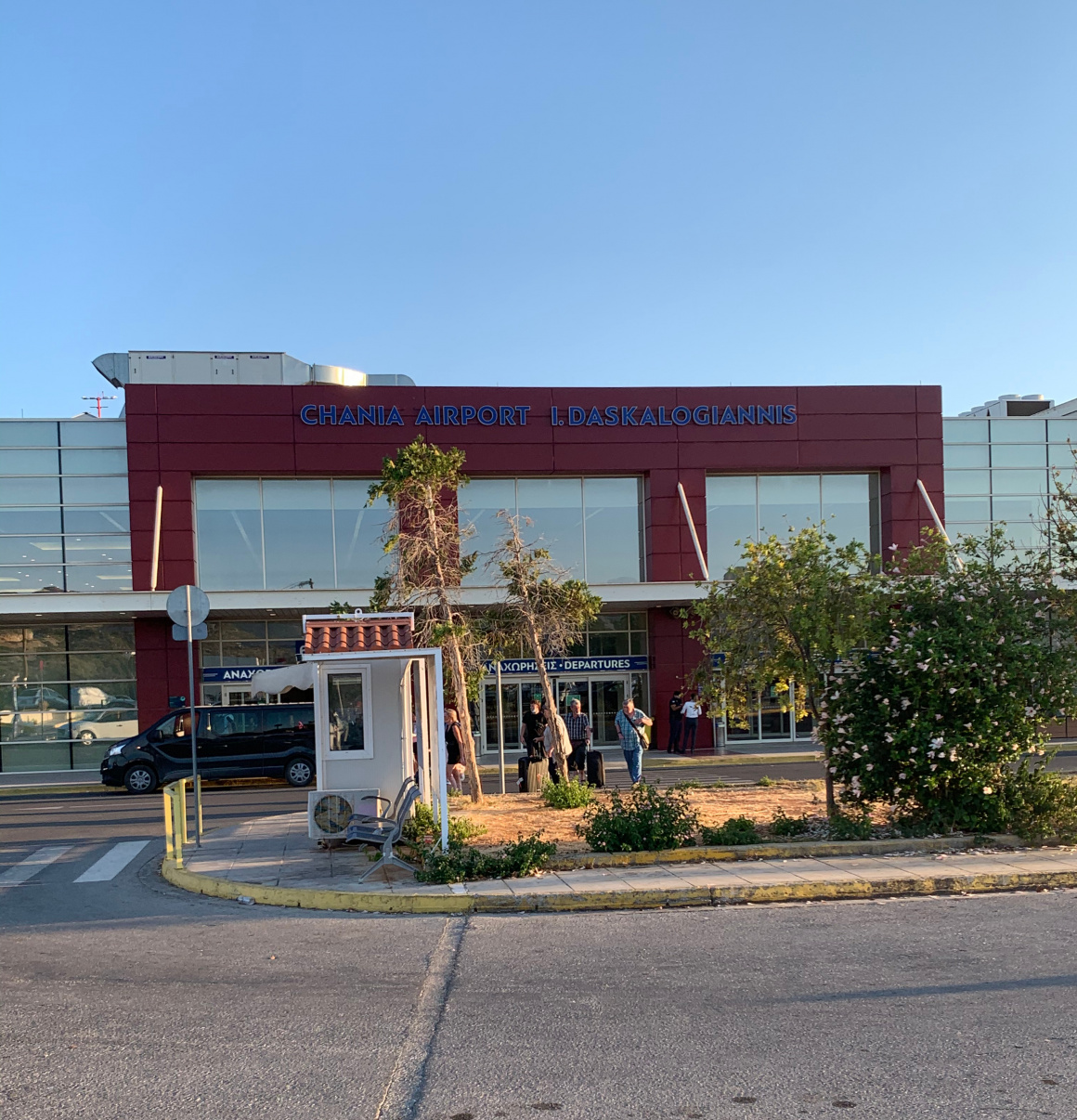
 'Aéroport de La Canée en juillet 2021.' - Attribution: Benoît Prieur
'Aéroport de La Canée en juillet 2021.' - Attribution: Benoît PrieurHeraklion Airport (HER)
Location:
Just 5 km (3 miles) east of Heraklion city centre, along the coast.
Facilities:
It’s an older, small airport terminal considering the huge volume it sees (over 8 million passengers per year). It can be chaotic in peak season, but improvements are ongoing (a new airport is under construction at Kasteli, though not ready until around 2025+). Upon landing, you often disembark via stairs and take a bus to the terminal. Baggage claim can be crowded. There are ATMs, currency exchange facilities (rates are not great, so consider withdrawing cash from an ATM instead), a couple of cafés and a small duty‐free section. A handy tip: there is a left-luggage service available if needed, though it isn’t always reliably open.
 'Kasteli Airport, Crete, Greece: View from the archaeological site of Lyctus.' - Attribution: Schuppi
'Kasteli Airport, Crete, Greece: View from the archaeological site of Lyctus.' - Attribution: SchuppiTransfer to Heraklion City:
It’s extremely close – by car/taxi around 10 minutes to the city centre, or by bus about 20 minutes. A taxi from the airport to Heraklion typically costs around €15–20 (often a fixed rate of about €17). Taxis queue right outside arrivals, and the staff will help if there is any confusion. The public bus (blue city bus No. 6 or others marked for “KTEL Station” or “Centre”) runs frequently from early morning until late at night, costing about €2 per journey.
Transfer to Resorts East/West:
If you’re headed to places like Hersonissos, Malia, or Agios Nikolaos (eastwards) or Rethymno and Chania (westwards), you have several options:
• Private Transfer / Shuttle: Many tour packages include coach transfers. Otherwise, you can pre-book a shuttle van or private car. For example, a shared shuttle to Hersonissos might cost €10–15 per person, while a private taxi to Rethymno could be around €90 (distance of approximately 80 km).• Taxi: You may take a taxi directly, but ensure you negotiate or confirm the price. Approximate fares are: to Hersonissos €35, to Malia around €50, to Rethymno €90, and to Chania €160.• Car Hire: Renting a car at Heraklion Airport is popular if you plan to explore widely. All major agencies have desks within the terminal area. It’s convenient as you can drive straight onto the main highway (E75) just 2 minutes from the airport. Book ahead in summer, and for further details, please check our Driving in Crete guide.• Bus (intercity KTEL): There is no direct intercity bus from the airport to other cities except via Heraklion city. You would need to take the city bus to the main KTEL station and then catch a connecting bus (for example, from Heraklion to Chania, or Heraklion to Rethymno). This option is viable if you are backpacking and wish to save money, though it can be a hassle if you have heavy luggage.
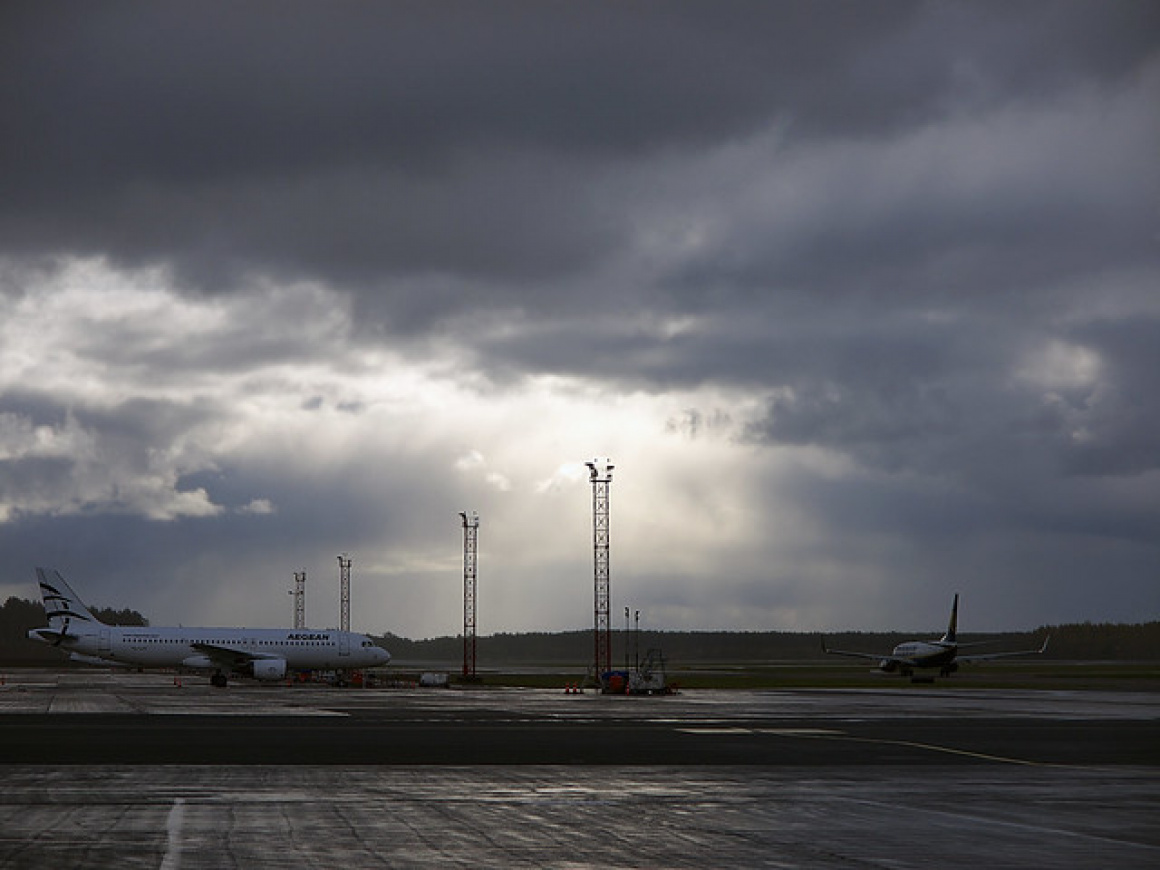
 'Crete by Dainis Matisons' - Attribution: Dainis Matisons
'Crete by Dainis Matisons' - Attribution: Dainis MatisonsTransfer to South Coast:
If you land at Heraklion but need to travel south (for example, to Matala or Ierapetra), consider hiring a car or arranging a private transfer since public transport often requires a connection via Heraklion city.
Chania Airport (CHQ)
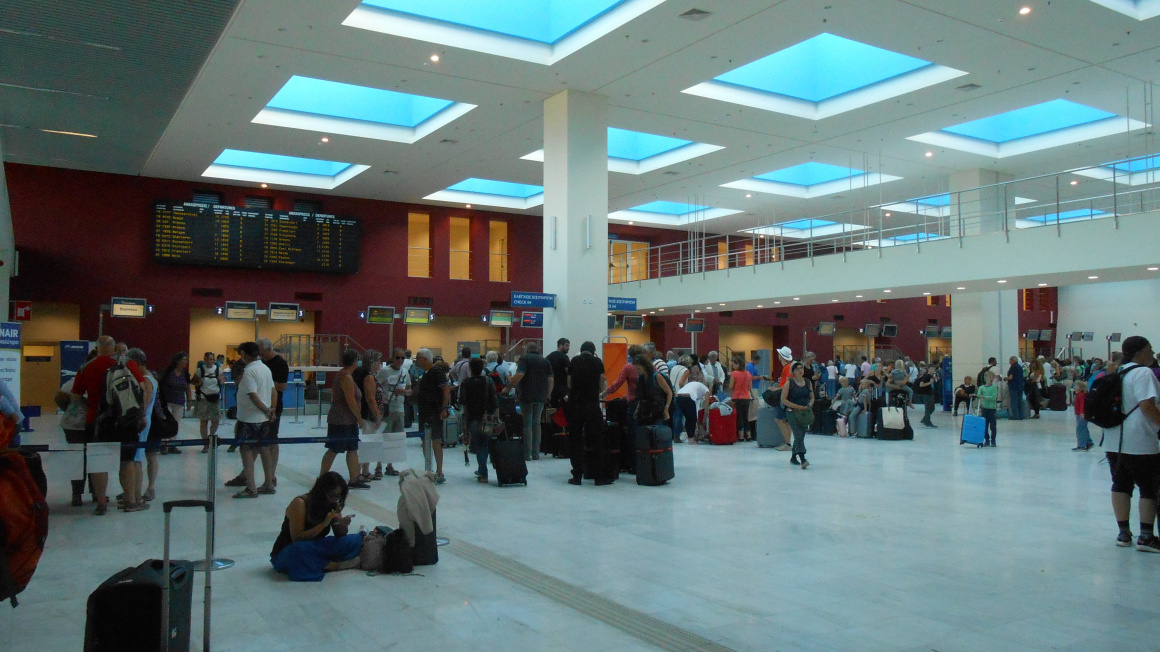
 'Abfertigungsschalter in der Abflughalle des Flughafens von Chania.' - Attribution: Joehawkins
'Abfertigungsschalter in der Abflughalle des Flughafens von Chania.' - Attribution: JoehawkinsLocation:
Approximately 14 km (9 miles) northeast of Chania city, on the Akrotiri peninsula. It’s about a 25-minute drive to Chania town.
Facilities:
Smaller than Heraklion Airport but generally a bit less hectic, it offers a couple of cafés, an ATM and limited services. The airport was modernised several years ago, which improved its facilities, though it still experiences high traffic on charter days.
Transfer to Chania City:
• Taxi: Typically costs around €25–30 to Chania centre, with taxis waiting right outside the arrivals area.• Bus: A KTEL bus, scheduled to coincide with flight arrivals, runs roughly every hour during the day. It costs approximately €2.50 and takes 30–35 minutes to reach the main bus station in Chania. Tickets are usually bought on board in cash. Note that if you arrive late (after 11pm), buses may not be available and a taxi might be necessary.
Transfer to Resorts (West):
Many travellers arriving at Chania Airport are bound for nearby resort areas. For resorts on the Chania west coast – such as Platanias, Agia Marina, or Kolymbari – taxis provide direct service at an extra cost (for instance, a taxi from Chania Airport to Platanias is around €45). Alternatively, you can travel into Chania by bus and then catch a frequent local bus towards these destinations.
For Rethymno: There are a couple of direct shuttles during summer from Chania Airport to Rethymno, or you might travel via Chania (by taxi or bus) and then take a KTEL bus to Rethymno. Some travellers pre-book a private transfer, which costs roughly €90 for a sedan.
For Souda Bay ferry port: Chania’s ferry port is in Souda, en route to the airport. If you need to travel from the airport to catch a ferry, a taxi is usually the easiest option (around €20).
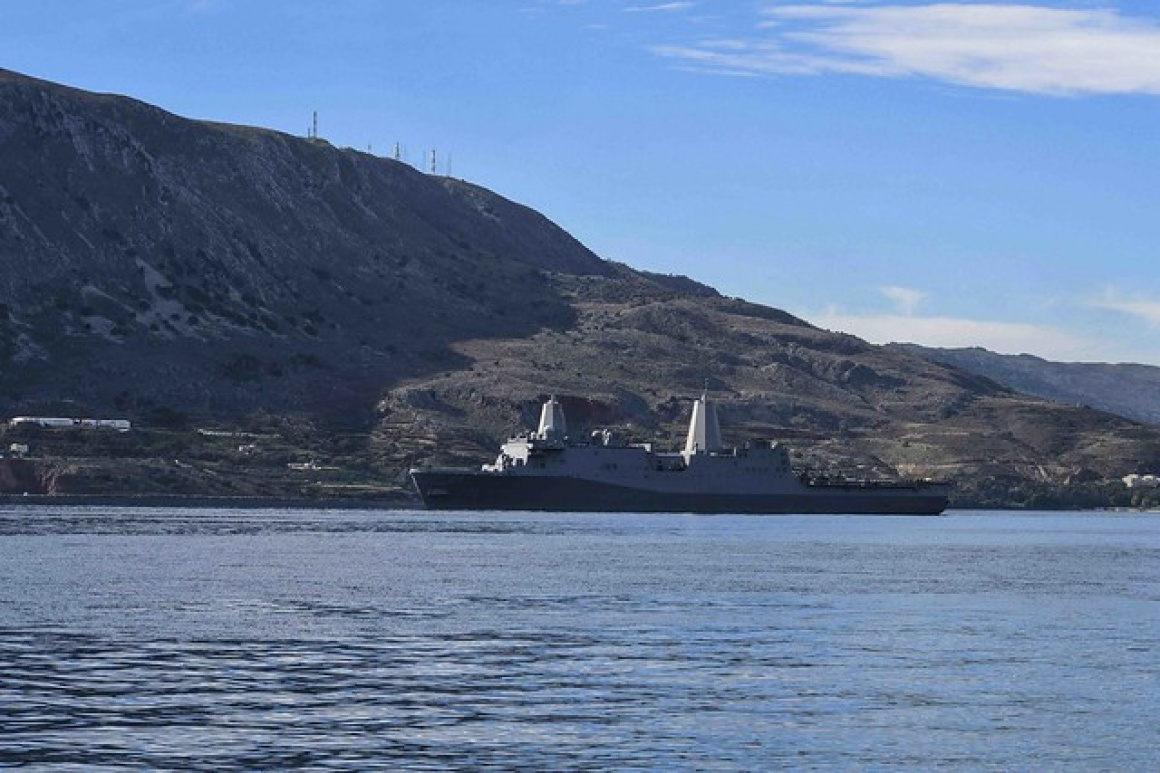
 '171201-N-BK384-056' - Attribution: CNE CNA C6F
'171201-N-BK384-056' - Attribution: CNE CNA C6FTransfer to South/Elsewhere:
If your destination is further afield – for example, Sfakia (Chora Sfakion) or Paleochora – from Chania Airport a car hire or private transfer is typically the most straightforward method. Although there are infrequent direct buses from Chania town, aligning schedules can be challenging.
If you’re staying in Chania Old Town and have heavy luggage, note that cars cannot enter the narrow alleyways. You will likely be dropped off at the nearest accessible point, from where you will need to walk a short distance.
Sitia Airport (JSH)
Location:
Just 1 km from Sitia town, this is an exceptionally small airport.
Flights:
There are a few flights operated from Athens by Olympic/Aegean, and in summer, some charters from Europe (for example, a weekly flight from Vienna) may operate. Additionally, there are occasional inter-island flights (to Kasos, Karpathos, Rhodes). Due to its size, if you use Sitia Airport, the proximity to town makes travelling easy – a taxi ride costs around €5 or you might even walk if you have minimal luggage. Often, your hotel may arrange a pick-up from the airport.
Since Sitia is far to the east, travellers heading to east Crete (such as Vai or Palekastro) might choose to connect via Sitia Airport from Athens to avoid the long drive from Heraklion. In such cases, transfers from Sitia to destinations like Vai are typically by taxi (around a 30-minute ride) or by a limited bus service.
For most travellers, Sitia Airport is not utilised unless there is a specific reason to do so.
Transfers: Options and Tips
Taxis:
Taxis are generally available at both Heraklion and Chania airports at designated ranks. They are metered, although often fixed rates to popular destinations are displayed. It is advisable to confirm the price or ensure that the meter is on. At Heraklion, for instance, official fare guidelines suggest approximately €15 for Heraklion centre, about €40 for Hersonissos, €80 for Agios Nikolaos, and around €180 for Chania. Typically, a Crete taxi can carry up to 4 passengers in a sedan; if your group exceeds this number, you might need two taxis or to pre-book a larger vehicle. Payment is nearly always expected in cash (Euro), though some taxis may now accept card payments.
Rental Cars:
Both major airports offer a wide range of car hire options. It’s common for travellers to pick up a car immediately upon arrival, letting you drive directly to your hotel. In Heraklion, car hire counters are situated either in the arrivals hall or just outside in a parking area, while at Chania, they are conveniently located near the terminal. Renting a car is particularly beneficial if you plan to explore multiple areas or if your resort isn’t easily accessible by public transport. For further details on driving conditions, please consult our Driving in Crete guide.
Buses:
Crete has two main bus companies – both operating under the KTEL brand (one for the Heraklion-Lasithi sector and another for the Chania-Rethymno sector). They offer reliable and economical intercity travel. However, for direct airport transfers, only city buses or a few specific KTEL routes are available. In Heraklion, the city bus from the airport runs approximately every 10 minutes, while in Chania, buses are timed with flight arrivals. Note that arrivals late in the night (past 11pm in Heraklion or after the last flight in Chania, usually around midnight) may find no bus service, necessitating the use of a taxi.
Shuttles & Private Transfers:
Many tour operators include coach transfers with package holidays. Alternatively, you can book a shared shuttle online where several groups are combined into one van or minibus, offering a cost-effective yet slightly indirect route. If you prefer a direct service and added convenience – such as meeting a driver holding a sign with your name – you can pre-book a private transfer. This option may be marginally more expensive than a taxi, but it is particularly useful if you have special requirements (like a baby seat or wheelchair access).
Local Transfers:
Once you reach your resort or town, short transfers between your hotel and other local transport hubs (such as ferry ports) may be required. In larger cities, taxis are easy to hail from central squares, while in smaller towns your hotel can usually arrange or call one for you. It is also common for some hotels in resort areas to provide their own shuttle service from the airport, either on a complimentary or fee basis.
Car Parking Note:
If you rent a car and are staying in a city centre like Heraklion or Chania, be aware that parking in the old town areas can be scarce. Many hotels do not offer on-site parking but may have affiliated lots or options for street parking. For instance, Heraklion has paid parking lots near the port and centre, and Chania has several around its Old Town. If you intend to explore the city on foot, you might consider delaying your car hire until you plan to leave the city centre.
Special Cases
Heraklion Airport to Ferry Port:
Many travellers arriving at Heraklion Airport have a connecting ferry to Santorini. The ferry port is only around 3 km from the airport. For this short distance, a taxi is usually the best option, costing approximately €15 (which may include a minimum charge and a baggage surcharge). There isn’t a direct bus service to the port, so if time is of the essence, opt for a taxi.
Chania Airport to Souda Ferry Port:
This journey typically takes about 20 minutes by taxi, costing roughly €25.
Domestic Flight Transfers:
If you fly from Athens or another island to Crete, you may have less luggage or a different schedule (often midday). The same transfer options outlined above apply. For very early departures, it is advisable to pre-book a taxi the night before, as early morning buses might not be in service. Also note that Heraklion Airport can experience long queues during early peak charter departures (around 6–8am), so arriving earlier than usual is recommended.
Airport to Major City Summary (for quick reference)
- Heraklion Airport to Heraklion City: Approximately 5 km. A taxi costs about €15–20 (approximately 10 minutes), while the bus (No. 6) runs every 10–15 minutes, costing around €2, with a journey time of roughly 20 minutes.
- Chania Airport to Chania City: Approximately 14 km. A taxi costs around €25 (approximately 25 minutes), with KTEL buses running approximately hourly at a cost of about €2.50 and taking 30–35 minutes.
- Heraklion Airport to Hersonissos: Approximately 25 km east. A taxi costs around €40 (20–25 minutes via highway), or you can take a bus from Heraklion station after arriving at the airport.
- Heraklion Airport to Rethymno: Approximately 80 km west. Options include a shuttle or taxi (around €90 for a 1-hour journey) or taking a bus via Heraklion with a total travel time of approximately 2 hours.
- Chania Airport to Rethymno: Approximately 70 km east. Options include a direct shuttle (approximately €80 for 1–4 passengers, if private) or a taxi to the Chania bus station followed by a bus to Rethymno, totaling around 2 hours of travel.
Cretan Hospitality Touch:
Don’t be surprised if a taxi driver offers you a local raki on arrival or shares quick local tips – Crete taxi drivers are often friendly and proud of their island. It’s advisable, however, to politely decline any alcohol until you have reached your hotel. Some transfer providers may even offer a complimentary bottle of water upon pickup in response to the Cretan heat.
In summary, navigating airports and transfers in Crete is fairly straightforward, with options available for every budget. On a budget? Use the buses and consider shared shuttles. If you’re seeking more comfort, taxis and private transfers abound. Want freedom? Grab the car hire key, check out our Driving in Crete guide and hit the road. One final note: both Heraklion and Chania airports may become extremely busy during peak season – midday for arrivals and early morning for departures. Patience is key, and allowing extra time for check-in and security (especially at Heraklion) will help. Enjoy your journey – as they say in Greek, “Kalo taxidi!”


